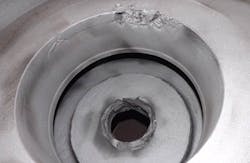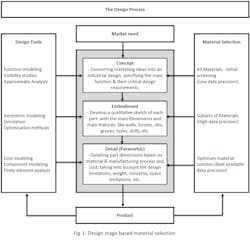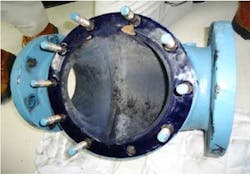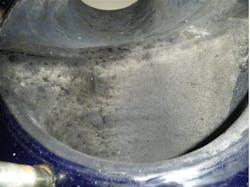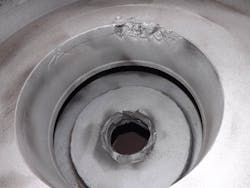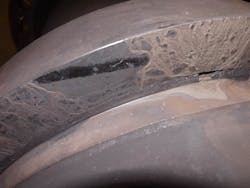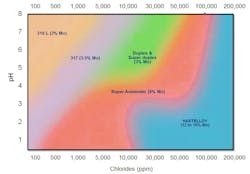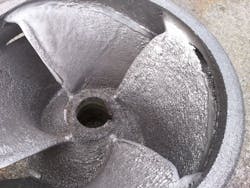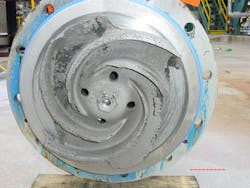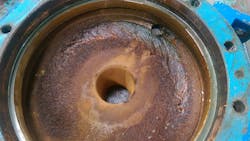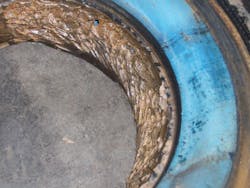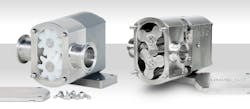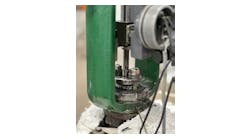Product development today benefits from computer-aided design (CAD), computer-aided engineering (CAE) and product-lifecycle management (PLM) disciplines, allowing a level of automation, analysis and documentation never before possible.
Nevertheless, failure to understand the crucial role of proper metallurgical controls from design through manufacture can lead to increased failure rates and production loss. Material selection and processing are critical — for new product development and for redesign upgrades for service or reliability improvement.
Material selection from numerous options requires careful evaluation of their properties for suitability. Factors such as economy, service compatibility, manufacturability, mechanical properties, corrosion — wear resistance and availability are to be considered prior to specifying the material for a given application. If selection is carried out haphazardly, the best material options may be ignored. Risk can be reduced by adopting a systematic material-selection procedure through verification testing.
In a broad sense, material selection is optimized by communication feedback between the field and manufacturer on performance, considering investment and operations and maintenance costs, to minimize total cost while ensuring acceptable safety and reliability.
Common or esoteric
Common as well as esoteric factors related to material selection are the following:
Initial screening parameters include functional requirements such as mechanical strength adequate for stress conditions, thermal-shock, corrosion and wear resistance, which are closely related to the material’s physical and chemical properties.
Manufacturability is a measure of a material’s ability to be worked and shaped, including castability, weldability or machinability. Processing operations drive the materials’ properties, and hence manufacturing methods have to be considered in evaluating the intended functional requirements.
Corrosion rates are determined by fluid variables, including pH of the environment (acidity or alkalinity), dissolved gases (O2, CO2, H2S, etc.), corrosive species (sulfides, halides), present solids and operating temperature and pressure.
Material reliability is difficult to measure, as it is not only dependent upon the material’s inherent properties, but also greatly affected by production and processing history. Chemistry control, heat treatments and surface modifications increase material reliability.
Failure-analysis techniques anticipate different ways products fail. Identified techniques constitute a systematic approach for reliability evaluation and product improvement.
Destructive and non-destructive testing/plant monitoring identifies defects which help to take appropriate remedial decisions regarding material repair or replacement and/or process environment modification. Feasibility to perform required inspections and testing is therefore a factor to be considered.
Systematic evaluation of relevant parameters in relation to application needs is a driving factor for reliable performance.
Fluid applications executed in harsh conditions are a common corrosion — wear source that leads to material degradation. For greater reliability, several issues related to materials selection — design, manufacture, material quality, condition monitoring and metallurgical analysis — must be addressed. This interdisciplinary approach enhances component life.
The severest of corrosions
Corrosion severity may be predicted by evaluating the process fluid parameters. This review requires input from knowledgeable process engineers to the manufacturer. Precise definition of the fluid environment, including the presence of trace chemical compounds, is essential.
In one example, etching failures of diaphragm valve glass linings at the largest methyl methacrylate plant in Thailand, caused by trace amounts of hydrofluoric acid (HF) in operations (as shown in figures 2 and 3), were brought to the attention of a pump maker.
This unspecified HF presence led to aggressive reactions with Silica (SiO2) in the glass to form fluorosilic acid (H2SiF6), which caused rapid degradations. The pump maker offered a comprehensive upgrade, replacing the glass lining with ETFE, suitable to handle service fluids with HF.
Corrosion evaluation in hydrocarbon systems includes verification of a fluid’s pH, organic acids, metal-iron concentrations, halides, biological activity and of any dissolved gases such as CO2, H2O, O2 or any other oxidizing agents. On the other hand, high-purity fresh water used in boiler-feed applications is usually considered non-corrosive. But, since pure water may become aggressive when unstable, reacting with its surroundings to regain equilibrium stability, localized corrosion damage to carbon steels or cast irons is very possible.
Figures 4 & 5 illustrate damage in unstable boiler-feed water with a need for a material upgrade to higher alloy 12 percent chrome steel suitable for aggressive waters. It’s clearly better to fully evaluate process fluid details to ensure proper material selection.
For brine applications, or any involving highly corrosive and conductive sea water, salinity, chlorinity, galvanic compatibility and biological activities are important measures.
For other chemical applications, temperature and concentration of corrosive chemicals is critical. For example, materials like 316 L, normally suitable to handle 5 percent H2SO4 at 60 C, are not suitable to handle 80 percent H2SO4 at the same temperatures.
Figure 6 is a general guideline for compatible materials against specific pH and chloride levels. Figure 7 shows stress-corrosion cracking and localized damage on a deep-well injection-pump stator, as a result of inappropriate metallurgy (UNS S 41600) used for the service involving around 30,000 ppm chlorides, pH around 7 and 160 ppm H2S. For similar services, guidelines suggest using duplex for cost optimization, and super duplex for improved reliability.
Special applications
For services involving higher solids, evaluate their form, size, shape, density, hardness and whether they are suspended or dissolved.
Phosphate service in phosphoric acid plants calls for materials to withstand erosion/corrosion and avoid the failures evident in figure 8. Specialized metallurgy such as high chrome irons, super duplex, super austenitic, alloy 31, G30 and alloy 59 are materials of choice here.
Hot mixed-acid applications — for example, 63 percent sulfuric and 4 percent nitric acid at 150 F — can lead to corrosion damage of highly alloyed materials, including the iron–nickel–chromium alloy CN3MCu, as evident in figure 9. This customer’s problem was solved with specialized chemistry restrictions and vacuum heat treating to improve grain refinement and to control intergranular corrosion and cracking issues.
Operating temperatures, flow rates, pressures, and continuous versus intermittent operations are important criteria for reliable material selection. Creep-rupture, short-time strength, thermal conductivity, thermal expansion, ductility and stability are the most important high-temperature properties.
At low temperatures, many metals lose ductility and impact strength, while yield and tensile strength may increase. Therefore, material selection for very low-temperature applications requires specialized knowledge, as well as unique qualification tests to demonstrate adequate material toughness. Chemistry and heat-treatment control grain refinements to improve fracture toughness.
Increasing flow velocity of conductive fluids has no effect on materials’ corrosion behavior, until the critical velocity capable of accelerating the loss of metal passive film is reached. Materials selected must not be sensitive to operating flow velocity and speed. Cavitation and recirculation have to be addressed with proper design to overcome erosion & abrasion damage to the pump, as evident in figures 10 and 11.
Manufacturability & sourcing
While perhaps seeming a mundane matter, ease of manufacture and sourcing availability impact materials selection.
Materials’ physical and mechanical properties, as well as corrosion data, are available in standard engineering handbooks. Where data is unavailable, selected materials must be subjected to corrosion and other tests, for strength, ductility, toughness and hardness that simulate the process and operating conditions and help determine how the material will perform in practice.
Tests destructive and otherwise are being used for inspection, testing and evaluation of materials’ discontinuities, properties and machining problems. Stage testing confirms the materials’ properties against design needs and rated conditions.
Availability of high quality alloys makes possible use of advanced manufacturing techniques. At end of day materials properties and behaviors follow from metallurgical phases, presence or absence of impurities and trace elements and non-metallic inclusions. Control of chemistry and heat treatment, casting quality and further aids to surface enhancements improve material reliability.
Lowest content of gases, impurities and non-metallic inclusions, listed in figure 12, help improve material reliability. Argon Oxygen Decarburization (AOD) and Vacuum Oxygen Decarburizer (VOD) refining perform multiple functions, including degassing, desulfurization, carbon deoxidation, precise alloying and decarburization. AOD-refined material has improved corrosion resistance, decreased susceptibility to sensitization, improved weldability and improved erosive wear resistance. VOD refining lowers the carbon content of high-alloy steels without over-oxidizing susceptible elements, such as chromium.
For austenitic stainless and duplexes, lowering carbon content below 0.03% minimizes the chance of sensitization and intergranular corrosion while controlling ferrite at the lowest level helps minimize sigma-phase formation and improve corrosion resistance.
Final points made
Reliability also is improved by the following:
- Specialized chemistry restrictions and heat treatments for precise structural changes
- Hot isostatic pressing for eliminating micro-porosity in metal castings
- Shot peening to improve fatigue life, corrosion fatigue and stress cracking
- Electro-polishing and other surface technologies to enhance metallurgical performance
Obtaining voice-of-the-customer input and conducting systematic failure or root-cause investigations improves reliability.
Reliability upgrades must be carefully implemented to avoid damages due to deviation from rated conditions. This can be achieved by material upgrades, modified environment and electrical protection.
Material selection begins with defining the expected process and operating conditions, along with other practical engineering and commercial considerations. Materials and metallurgical experts play a vital role for optimum material selection based on knowledge not only on material performance, but also the fabricability, availability and total costs. Fundamentally, a thorough evaluation of parameters listed below helps to inform reliable decision making.
Vikas Panchal is global manager, materials technology, India Technology Center, ITT Goulds Pumps.
References
- Mechanical Engineers’ Handbook: Materials & Mechanical Design, Volume 1, 3rd Edition, by John Wiley & Sons, Inc.
- Norsok standard M-001, revision 4, for material selection.
- Materials Engineering for the Chemical Process Industries – A Concise Handbook of CPI Materials with an Introduction to Materials Selection, Materials Protection and Corrosion Control. By Prof.dr.ir. Walter BOGAERTS.
- Technology Roadmap for Materials of Construction, Operation and Maintenance in the Chemical Process Industries. By Materials Technology Institute of the Chemical process Industries.
- Materials selection for Seawater Pumps. By Stephen J. Morrow, ITT Corporation.
- Recommended Practice No. SNT-TC-1A : 2011 (The American Society for Nondestructive Testing, Inc.)
- Melting and refining technology of high temperature steels and super alloys. By R Schlatter, Latrobe Steel Company, Pennsylvania, US.
